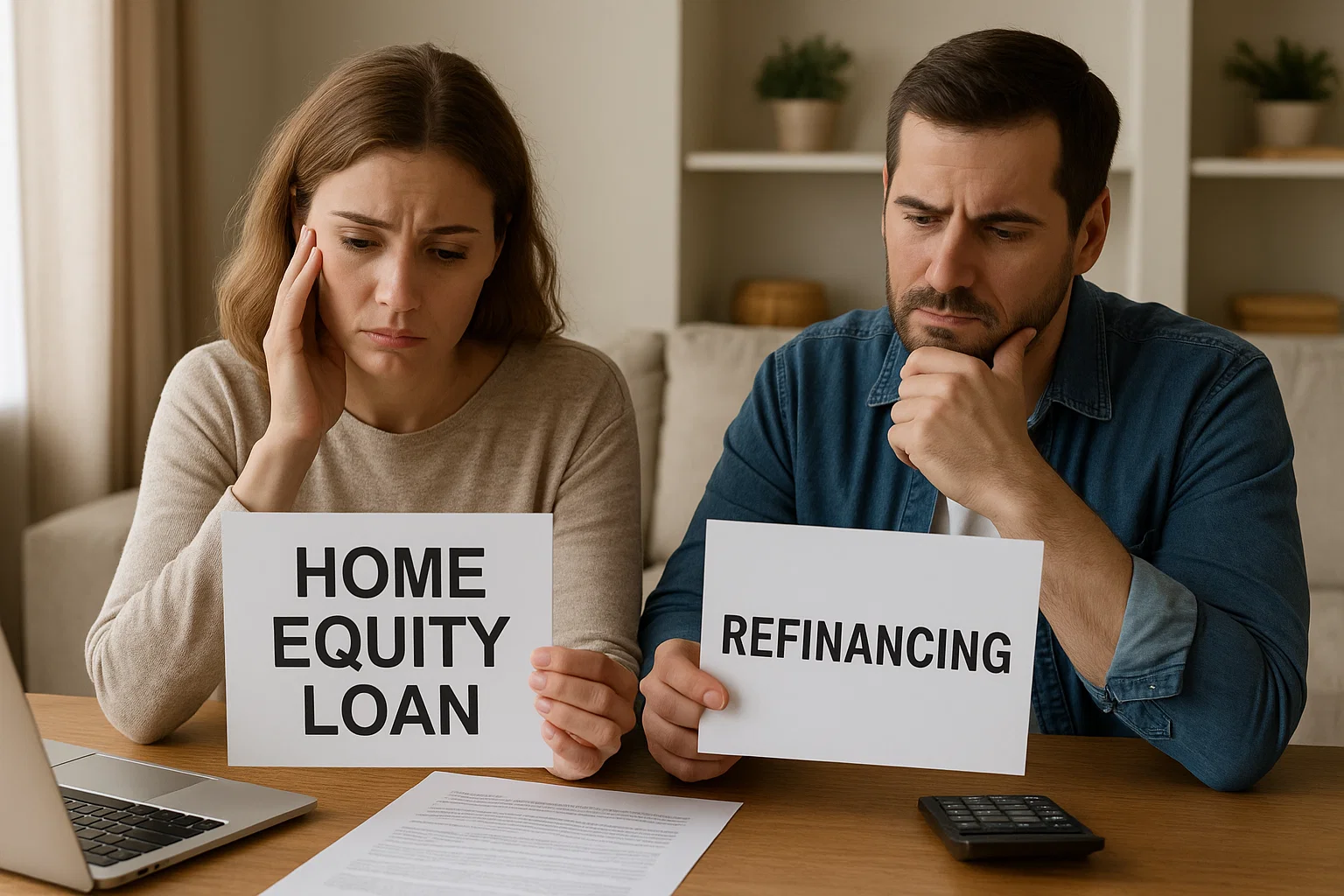.png)
In today's dynamic housing market, your mortgage does not have to remain static. Refinancing is often described as a financial reset button that homeowners overlook. It provides a chance to reshape your loan terms, reduce monthly payments, or access better rates that reflect your improved financial standing. For families navigating the economic landscape of 2025, working with the right partner can transform an old mortgage into a powerful tool aligned with your current goals and circumstances.
Why Consider Refinancing?
Refinancing means replacing your existing home loan with a new one, ideally under better terms. Unlike modifications or payment plans, a refinance offers a fresh start, resulting in a new interest rate, a new loan period, and a new monthly payment.
The market has likely shifted since you first purchased your home; interest rates fluctuate, your credit score may have improved, and your property value could have changed dramatically. When you signed your original mortgage, perhaps rates were higher, your income was less stable, or you accepted certain terms just to gain approval. Now, with years of payment history and potentially a stronger financial profile, you are in a different position. Refinancing allows you to leverage that growth, possibly saving thousands over the loan's lifetime while improving your monthly cash flow.
The refinancing journey is typically straightforward: you connect with a trusted lender, submit updated financial documents, arrange for a property appraisal, and close on your new loan. Processing fees and closing costs usually range from 2–4% of the loan amount, though many borrowers find that the long-term savings significantly exceed these upfront expenses.
Questions to Ask Yourself Before Refinancing

Before committing to a refinance, consider the following critical questions:
- Have interest rates dropped since your original loan? Even a 0.5–1% reduction can translate to significant monthly and lifetime savings.
- Has your credit score improved substantially? Better credit often unlocks lower rates and more favourable terms than those available when you first financed.
- Are you planning to stay in your home for several more years? Refinancing makes the most sense when you will remain long enough to recoup closing costs through savings (the break-even point).
- Could you benefit from switching loan types? Moving from an adjustable to a fixed-rate loan (or vice versa) might better suit your current risk tolerance and plans.
When Does Refinancing Make Financial Sense?
For many homeowners, refinancing becomes attractive when the interest rate environment shifts downward. For example, if you are currently paying 8.5% and can secure 7%, that difference compounds into substantial savings month after month.
Other homeowners refinance to shorten their loan term—such as converting a 20-year remaining balance into 15 years at a similar monthly payment—which builds equity faster and reduces the total interest paid.
Life changes also frequently drive refinancing decisions, including:
- Consolidating finances after paying down other debts.
- Approaching retirement and preferring predictable fixed payments over variable rates.
- Refinancing to remove co-borrowers after a divorce or to buy out partners in jointly-owned properties.
The key to a successful refinance is matching the strategy to your specific situation. It is not about chasing every rate drop; rather, it is about identifying when new terms genuinely improve your financial position and align with your household goals.
Understanding Your Refinancing Potential
To make the potential savings concrete, consider this example:
Say your current home loan balance is ₹40 lakh at 8.5% interest over 15 remaining years, resulting in a monthly payment around ₹38,500. If you refinance to 7.5% for the same 15 years, your payment drops to approximately ₹37,000. This saves you ₹1,500 monthly, or ₹18,000 annually.
If you factor in closing costs of ₹1.2 lakh, you would recover that expense in about eight months. Every month thereafter represents pure savings, and over the full 15 years, you would save over ₹2.5 lakh compared to keeping your original loan. This is money that can be redirected toward investments, education, or improving your quality of life.
Alternatively, you might refinance to a 10-year term at 7.5%. Your monthly payment increases to around ₹47,500, but you eliminate five years of payments and save dramatically on total interest. The right choice depends entirely on your income stability and long-term priorities.
Critical Considerations Before You Sign

Refinancing requires diligence. Before committing to a new loan, heed these critical considerations:
- Shop multiple lenders for rates and terms. Comparison shopping is essential because each institution has different criteria and pricing.
- Calculate your break-even point carefully. Divide the total closing costs by your monthly savings to determine when the refinancing pays for itself, and ensure you plan to stay in the home beyond that point.
- Review all fees transparently. Understand every line item before committing, including processing charges, appraisal costs, and legal fees.
- Assess your current financial health honestly. Your improved income, decreased debt, and risen credit score are factors that determine the terms you will qualify for.
- Document everything and maintain records. Organized files of loan terms, payment schedules, and correspondence with lenders prevent future confusion and support financial planning.
Making Refinancing Work for You
Refinancing is a strategic financial move that rewards clear objectives and careful planning; it should not be an impulsive decision driven by temporary rate changes or aggressive marketing, nor is it a one-size-fits-all solution. When you understand your goals—whether lowering payments, shortening terms, or switching loan structures—you can evaluate offers objectively and choose what genuinely serves your interests.
The right refinancing partner makes the difference between a smooth transition and a frustrating experience. Look for lenders with:
- Transparent processes.
- Responsive communication.
- Proven track records with homeowners in similar situations.
Always ask questions freely, compare terms side-by-side, and never rush through documentation you do not fully understand.
In 2025's evolving financial environment, where economic conditions and personal circumstances shift rapidly, refinancing offers homeowners a way to stay agile. By approaching it with diligence, comparing options thoroughly, and aligning decisions with your long-term vision, you transform your mortgage into a manageable, optimized part of your wealth-building strategy.

Alex Chen

Alex Chen













Get in touch with a loan officer
Our dedicated loan officers are here to guide you through every step of the home buying process, ensuring you find the perfect mortgage solution tailored to your needs.
Options
Exercising Options
Selling
Quarterly estimates
Loans
New home

随时了解有见地的文章和指南。
每周一,你将获得一篇文章或指南,这将帮助你在工作和个人生活中更具活力、更专注和更有成效。





.png)
.png)
.png)
.png)
.png)
.png)
.png)
.png)
.png)
.png)
.png)
.png)
.png)
.png)
.png)
.png)
.png)
.png)
.png)
.png)
.png)
.png)